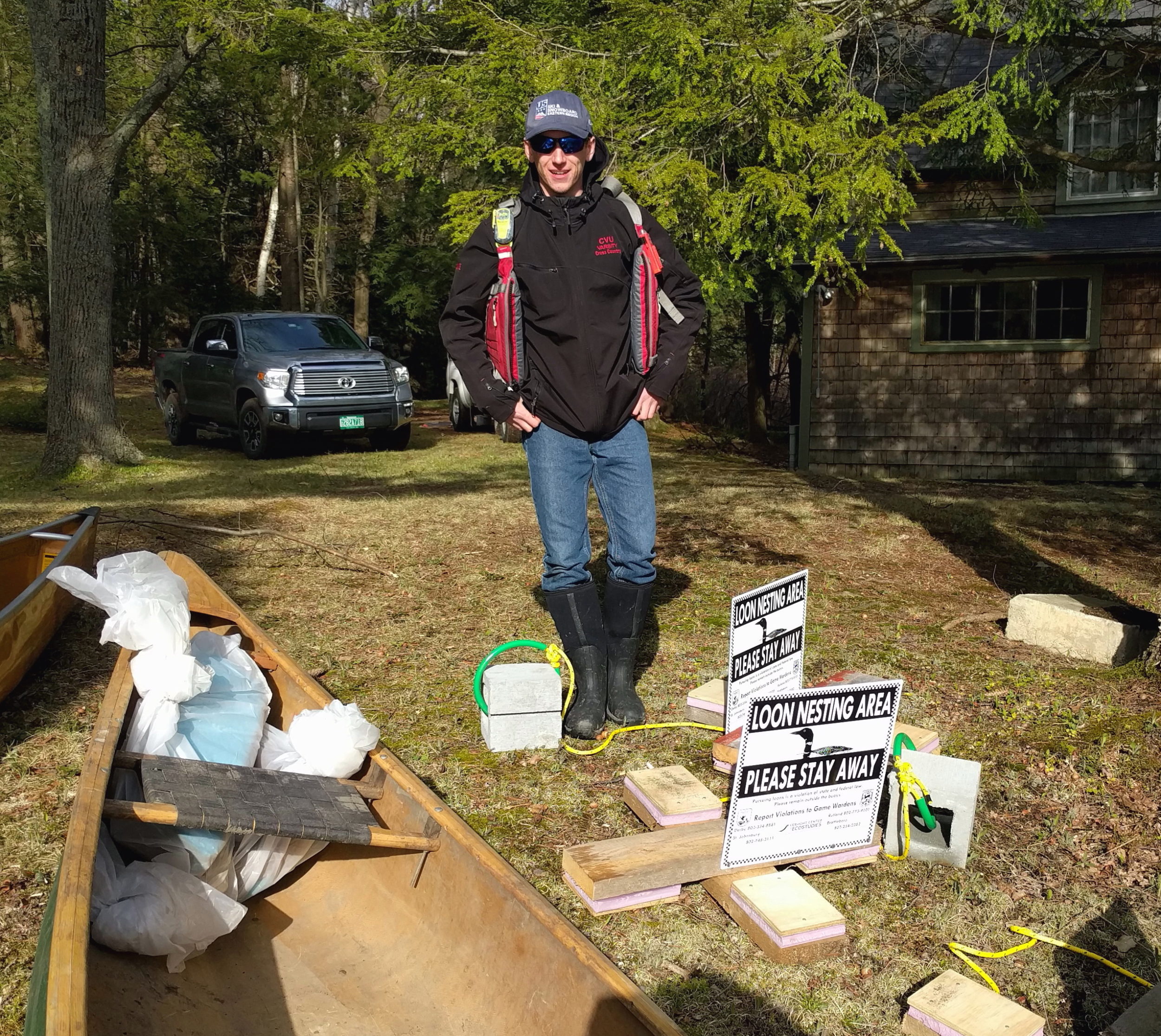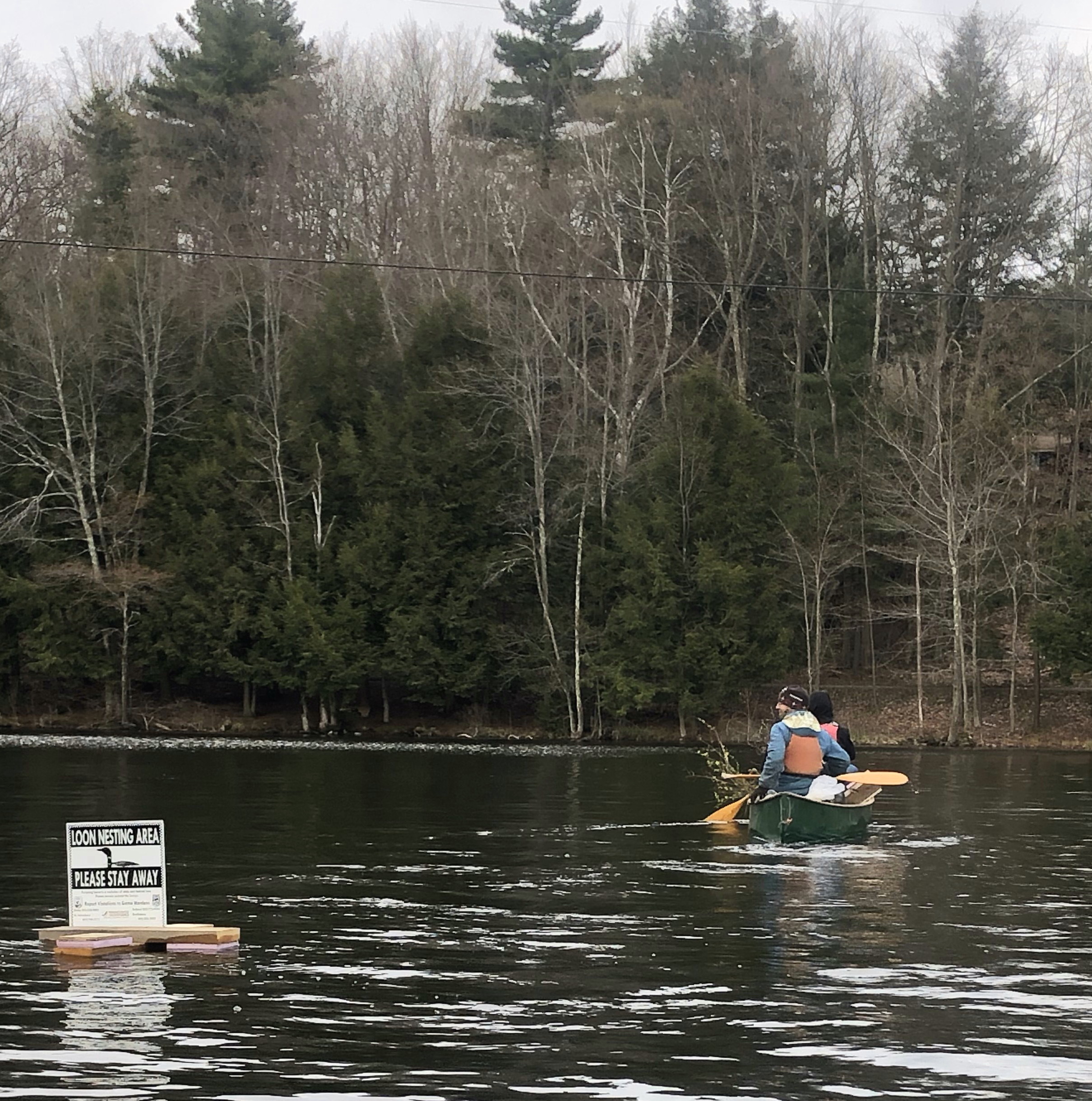
Eagle Scout in-progress, Caleb Nye, with new nest warning signs ready for deployment. © Eric Hanson
When we see the words “eagle” and “loon” in the same sentence, we usually think of yodeling male loons and disappearing chicks. But in this case, it’s all good news for the loons. This past year, Caleb Nye of Hinesburg, Vermont volunteered his time and talents to complete numerous activities for the Vermont Loon Conservation Project (and for the loons of Lake Iroquois) in his pursuit to earn the rank of Eagle Scout–the highest achievement attainable in the Boy Scouts of America program.
Caleb instructed and guided his fellow scouts on building new nest warning signs for use on Lake Iriquois, and replaced the mesh on the existing loon nesting raft with heavy-duty metal lobster trap material. The lake’s loons had used the raft successfully in 2019, but muskrats had discovered that the raft made for a good winter feeding and hang-out spot, and had chewed through the plastic mesh. This spring, Caleb assisted me with placing shrubs, small trees, soil, and grasses on the raft to create an enticing island-like nest, which we anchored in a quiet cove. Happily, we were treated by the loon pair swimming up to and around the raft within 30 minutes of us finishing our house-keeping duties! The pair nested by mid-May, and have successfully reared two chicks this summer.
Earlier this summer, Caleb wrapped up his project by organizing a team of nine fellow scouts and family members to deliver loon conservation and natural history information to over one hundred cottages on the lake (adhering to COVID-19 social distancing and safety rules, of course). He and his crew engaged with many lake residents along the way.

Caleb and VCE loon biologist, Eric Hanson, transport vegetation to the upgraded raft and set out new loon nest warning signs. © Will Nye
I need to finish up this story by sharing Caleb’s early encounters with loons as a young child. His grandmother, Pat Nye, helped steward the first loon pair in central Vermont on Lake Ninevah back in 1996. Pat continued to be both a key volunteer and major supporter of the Vermont Loon Conservation Project for many years, and introduced Caleb to these black and white birds at an early age. After Pat passed away, Caleb and his family lived on Lake Ninevah from 2011-14 where his father, Will, continued to take care of the lake’s loon nesting signs. The family subsequently moved to Hinesburg, and now Caleb is starting his senior year at Champlain Valley Union High School this fall. Caleb and his family have also conducted the annual LoonWatch count on Lake Iriquois for the past two years.
This is the second Eagle Scout project I have helped with. The first was in the early 2000s with Chris Persico on Lake Eden in Eden Mills, Vermont. Chris went on to study wildlife biology at the University of Maine, and is now a raptor biologist for Biodiversity Research Institute. Caleb may or may not become an ornithologist–but he will have a deep appreciation for loons and for how people make a difference in conservation efforts.
